Behind the Seeds
By Holly Frainer, Project Wingspan Plant Technician
I am the Plant Technician for Project Wingspan with Pollinator Partnership, and I have the best job of working with flowers all day long! I work with all parts of the flowers from the roots all the way to the showiest parts we often gaze at and think of when we hear their names… Foxglove, Wild Bergamot, Meadowmint, Asters, and Liatris to name some. A smaller, more intimate part of the flower in today’s focus is the seed, and I'm here to tell you that there’s a world of beautiful seeds out there and some are so characteristic that they make you enjoy them just as much as the bloom!
New England Aster
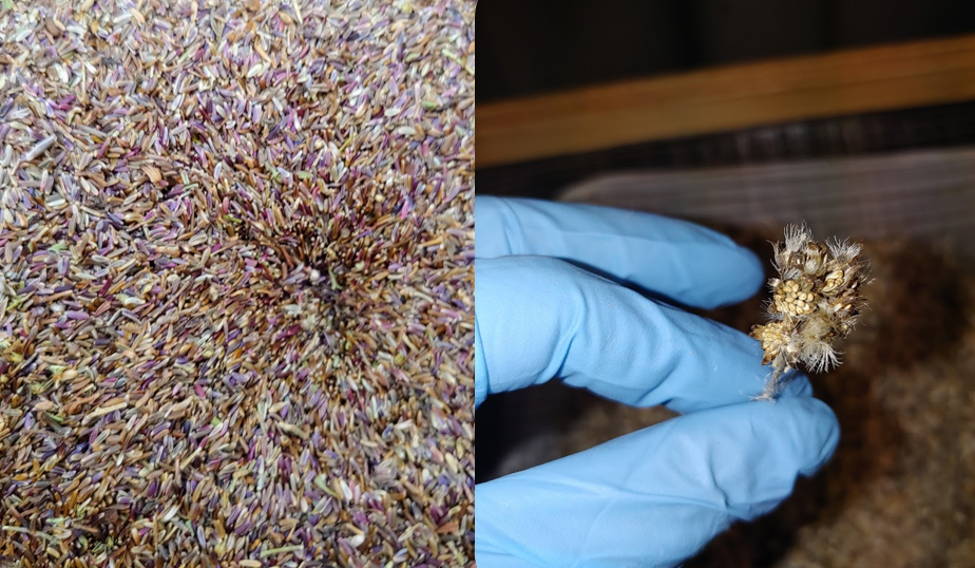
Seed cleaning is a vital part of Project Wingspan; I clean all the seed that was harvested at the end of the growing season for the targeted species. Once the seed has been received from our amazing volunteers, team leads, and core partners, all machines are running full force! The machines that are used in the cleaning process range from hand-cleaning entirely, to multi-step machine cleaning. Though some seed will take it’s own route in the cleaning process and require specialized steps, seed takes the same cleaning routine for the most part once received at Mason State Nursery. The seed arrives via mail delivery to Mason State Nursery or dropped off by the volunteers who harvested the seed. Once the seed is received, we catalogue the seed utilizing the details from the field data sheet that was filled out during harvest, obtain a pre-cleaned weight for the submission, and then start cleaning.
Mailbags filled with seed
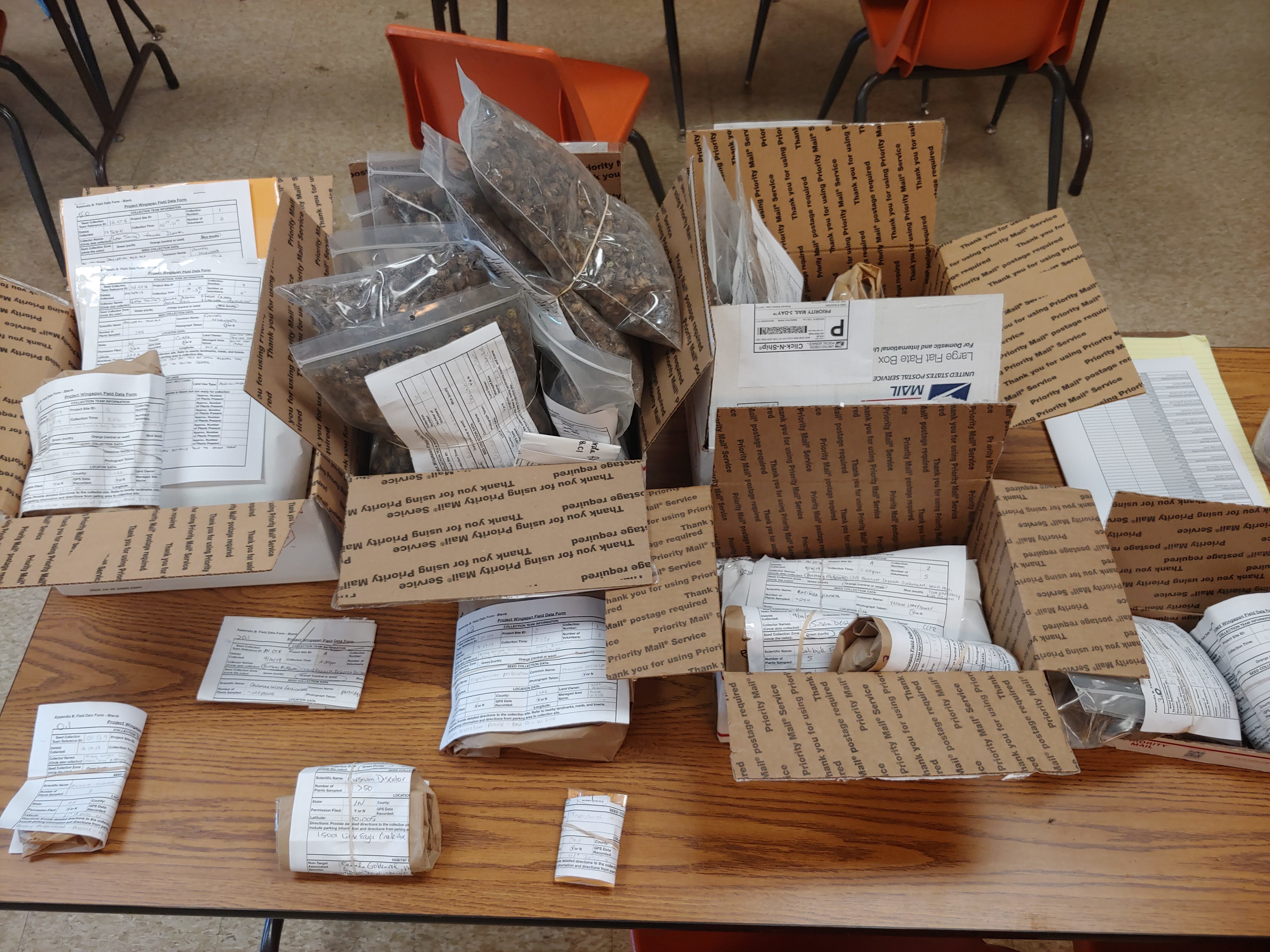
At first inspection, I will set aside any loose seed in the shipment, then start breaking down the trash from seed pods and getting the remaining seed. Sometimes there is a larger amount of plant debris than there is seed in a shipment and requires some special tools to get the seed… So, it becomes a game of “Cat and Mouse” trying to get all the seed from a plant. Depending on how a plant holds onto it’s seed is which cleaning route it will take… Some species, such as Foxglove, Wild Bergamot, or Milkweed-where they “hold on to the seed” by fibers or in a seed head need to be spun out of grasp of the seed.
(Left) Foxglove seed head chucked full of seed under microscope; (Right) Foxglove in the Dybvyg
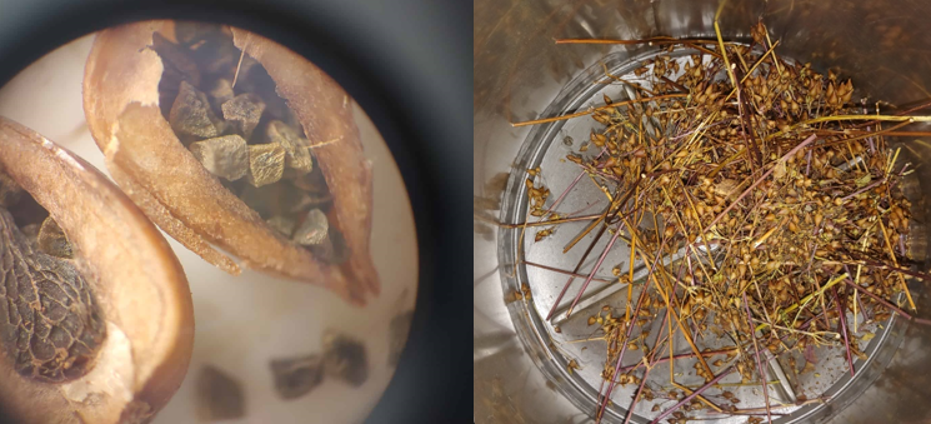
The Dybvyg (pronounced dib-vig), with a name that sounds like a carnival ride, the action is about the same. Literally, the seed is inside of a cylinder that spins a spoke at the bottom at a high rate of speed thrusting the seed away from the plant.
The Dybvyg seed cleaning machine
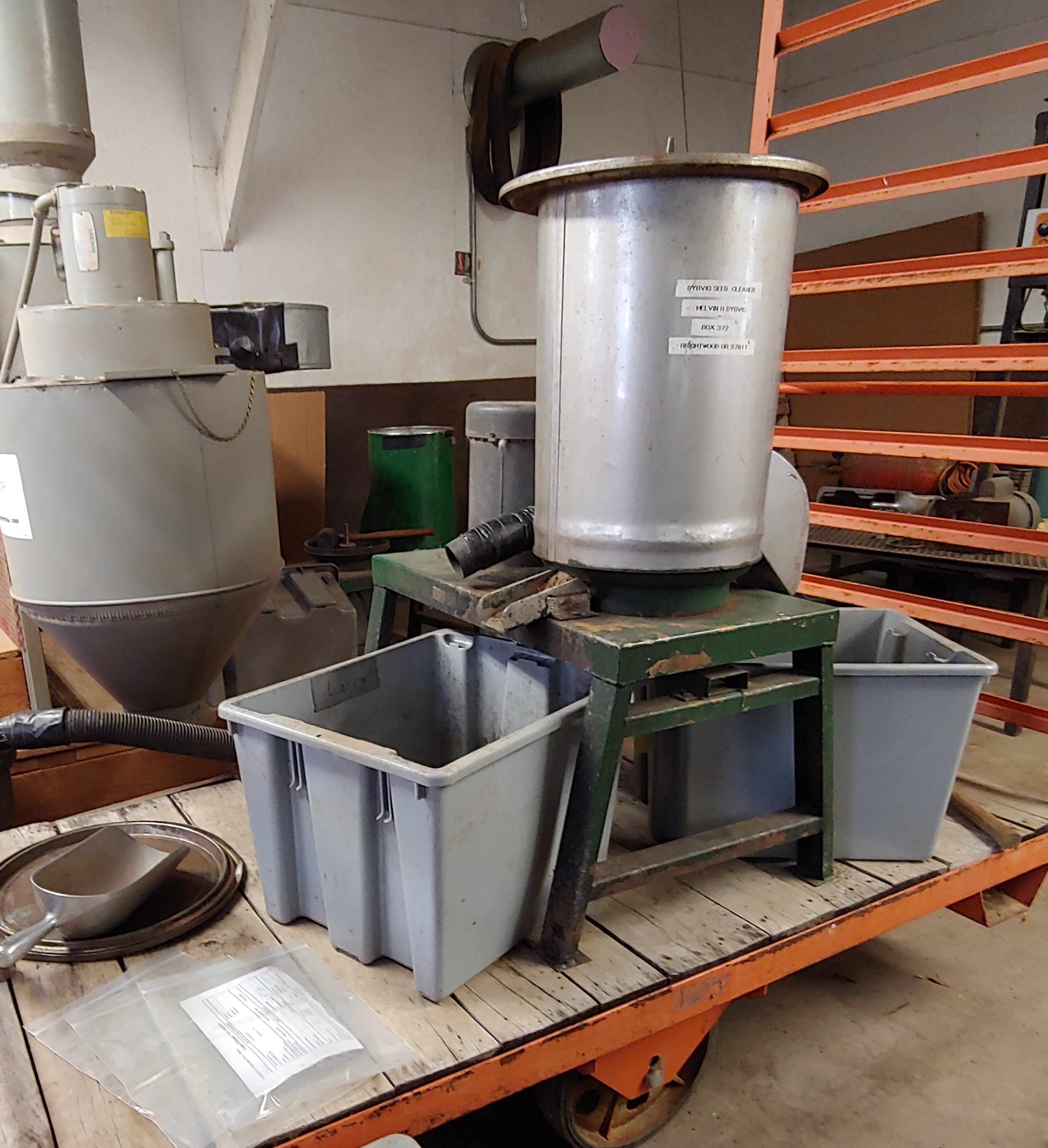
The next stop for the seed is to go through “The Jesse”, which is a high-powered, multi-setting vacuum cleaner for the seed. And just like other vacuums, it comes equipped with it’s hoses, vacuum bags, and regular maintenance. This machine will suction the dust away from the seed, along with a majority of the debris that outweighs the seed. This machine can clean seed pods that are as big as a cotton ball, to as tiny as a grain of salt.
The "Jesse" vacuum cleaner
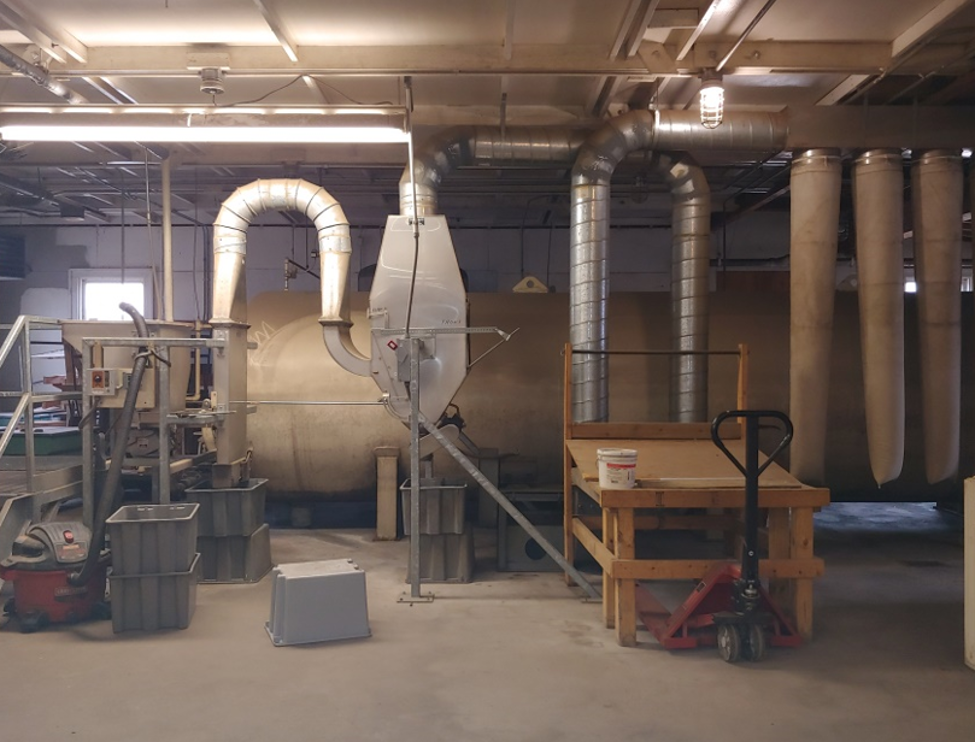
Next is the Clipper. It clips the remaining debris away from the seed by using a 2-layer screen cleaning process that shimmies and shakes at a slant. The screens are varying in size, larger openings on top level and smaller openings on the bottom level. The seed travels through a funnel, down onto the first screen and will shake through to the second screen below, shaking itself further away from the debris.
The clipper
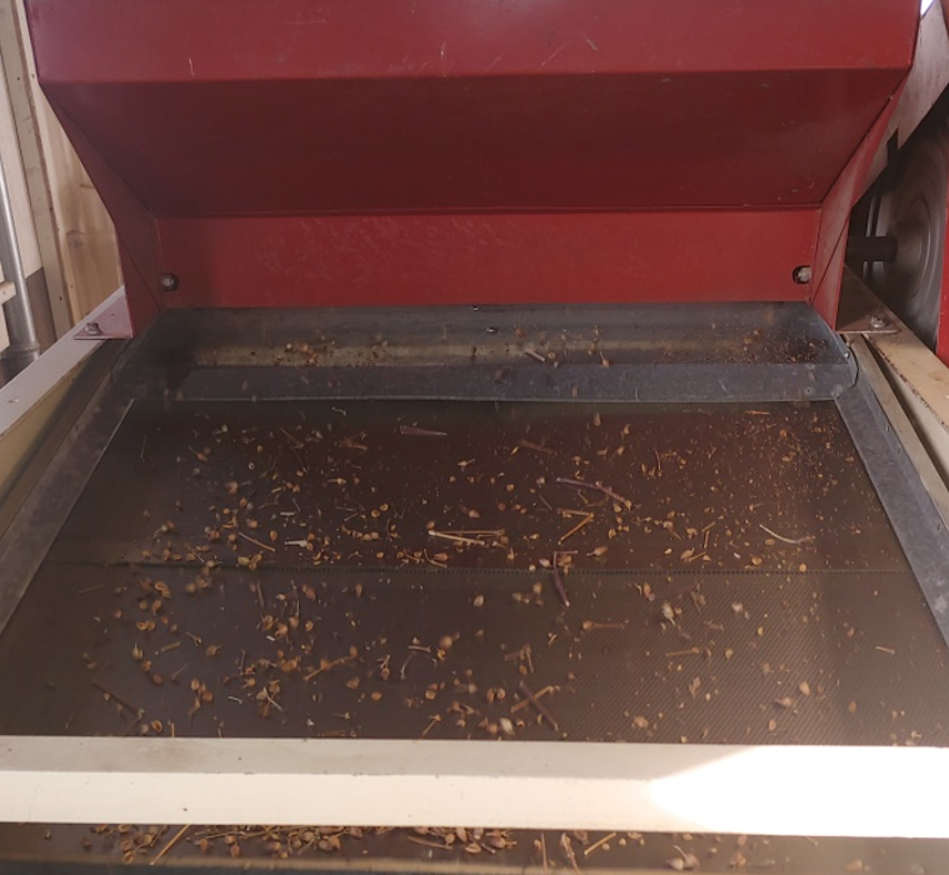
But what happens when after all those steps, you’re still left with seed that isn’t clean? All plant debris is inspected under a microscope to ensure we are getting maximum yield, and not throwing any good seed away. Often, we’ll just re-adjust the machines and go through the process again. Most seed is considered clean after it has been handled 3-5 times on average. It’s just like that.
Honorable mentions:
In-process seed cleaning-each tub contains a different species/zone/state
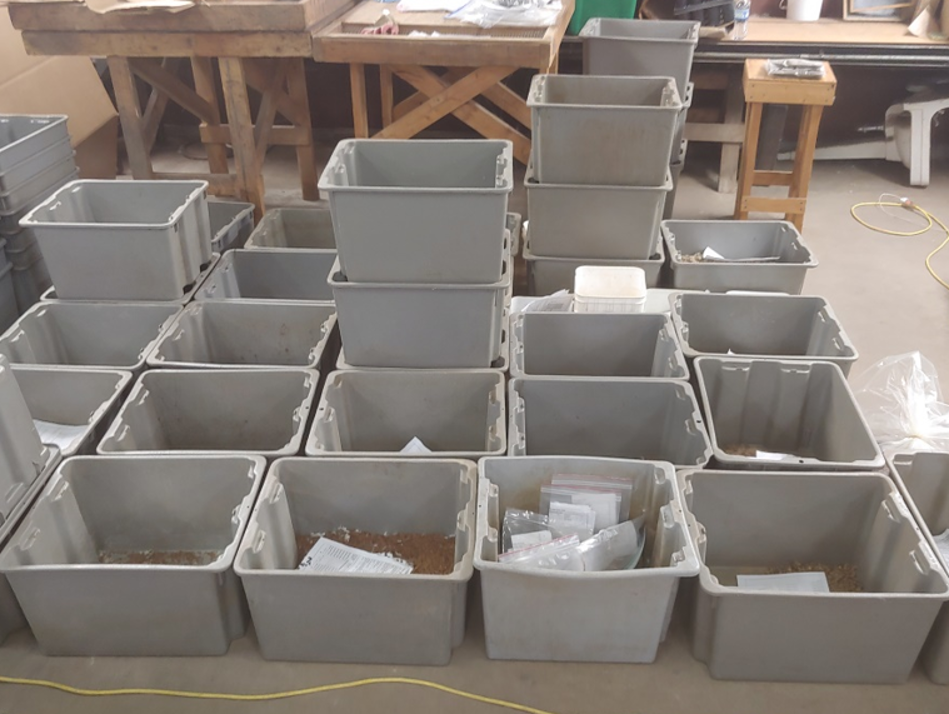
Hand Depodding milkweed:
Most people tell me they want to play in the milkweed silk:
Where does all that milkweed silk go to? After I hand-depod the seed, it takes a trip through the Dybvyg to release the seed from the silks, and the use of a shop-vac!
I hope you have enjoyed seeing a little bit of my everyday, I enjoyed sharing with you!
So who’s ready for next season? I know I am!